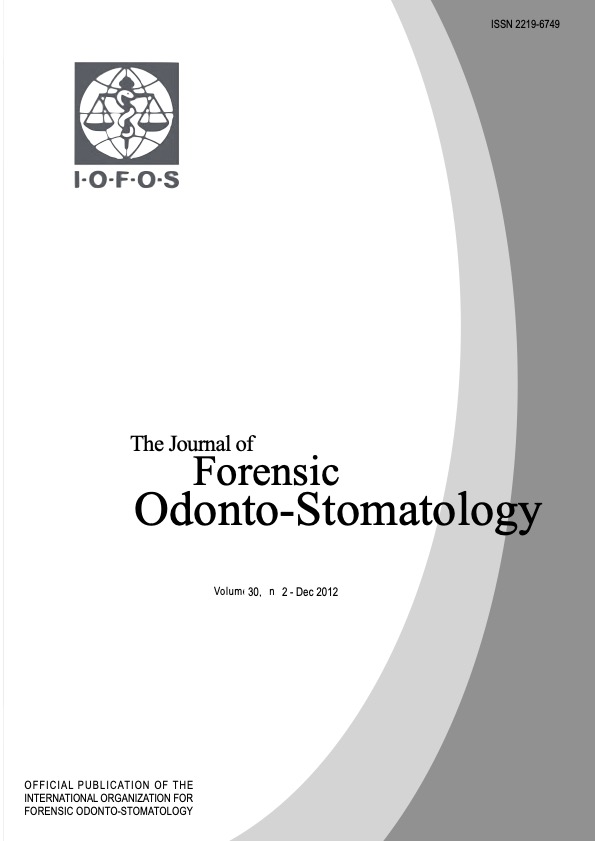Comparison of the applicability of four odontological methods for age estimation of the 14 years legal threshold in a sample of Italian adolescents
Keywords:
dental age estimation, forensic odontology, forensic dentistry, legal threshold of age, dental mineralization, Demirjian method.Abstract
The 14-years age threshold is especially important in Italy for criminal, civil and administrative laws. Several methods relying on dental calcification of the teeth, up to the second molar, are used for the evaluation of age in childhood.
The objective of the research was to compare the inter-rater agreement and accuracy of four common methods for the dental age estimation – Demirjian (D), Willems (W), Cameriere (C) and Haavikko (H) – in a sample of Italian adolescents between 11 and 16 years. The sensitivity and specificity, and the different level of probability, according to the peculiarities of Italian criminal and civil law, were compared for the methods examined, considering the threshold of 14 years.
The sample was composed of 501 digital OPGs of Italian children (257 females and 244 males), aged from 11 years and 0 days to 15 years and 364 days.
The maturation stage of the teeth was evaluated according to D, W, H and C methods by three independent examiners. Mixed statistical models were applied to compare the accuracy and the errors of each method.
The inter-rater agreement was high for the four methods and the intraclass correlation coefficients were all ≥ 0.81. Methods H and C showed a general tendency to underestimate the age in the considered sample while the methods D and W tended to overestimate the child’s age. In females, D and W were more accurate than C, which is more accurate than H. In the males, W is the most accurate method even though it over-estimated age. Considering the 14-years threshold, the sensitivity of D and W methods is quite high (range 0.80; 0.95) and specificity is low (range 0.61; 0.86).
The principal findings of the research are: the W and D methods are much more accurate than C and H, but they tend to overestimate the age. The C method largely underestimates the age (by ~1 year) for both genders and for all operators. H is unsuitable for dental age estimation in the Italian population, while W and D yielded high sensitivity but low specificity, thus producing high rates of false positive results. The choice of method to estimate if an Italian child has reached the 14- years legal threshold should mainly be chosen according to the different legal milieu (if civil or criminal) and the gender of the examined individual. The age assessment in criminal case must be prudently managed.

